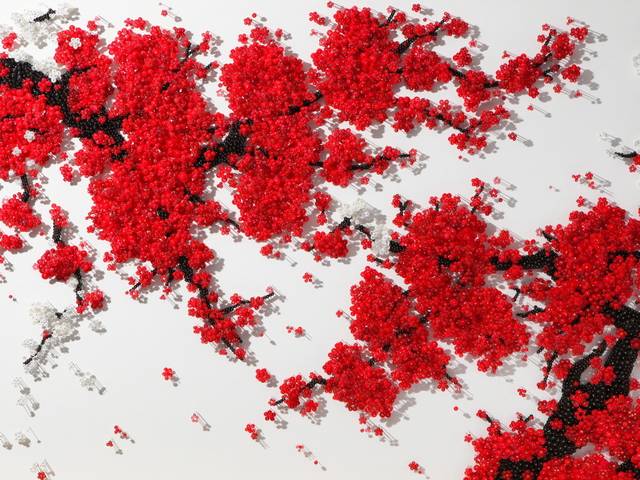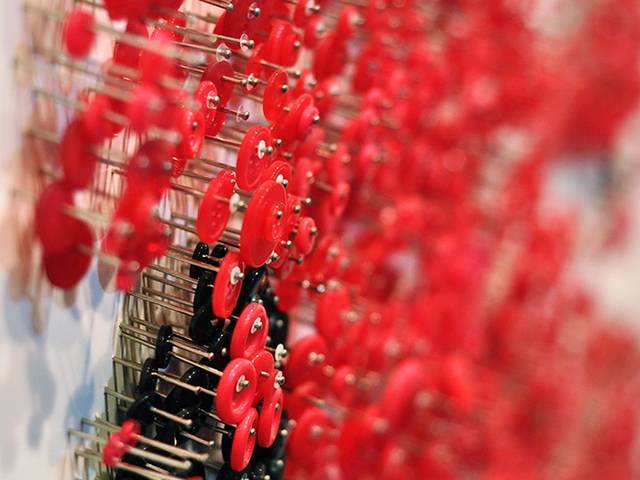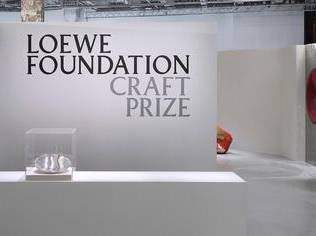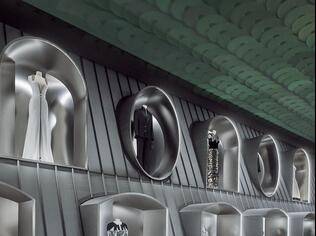Ode To Art introduces Ran Hwang, who is best-known for creating intricate, large-scale wall installations with exquisite materials from the fashion industry such as beads, buttons, pins and thread.
Ran Hwan graduated with a Bachelor in Fine Arts from the School of Visual Arts, New York, and subsequently went on to attain her Masters Degree in Fine Arts at the Graduate School of Arts Chung-Ang University in Seoul, Korea.
This Korean-born artist currently resides and practices her craft in New York.
"The process of building large installations are time consuming and repetitive and it requires manual effort which provides a form of self-meditation I hammer thousands of pins into a wall like a monk who, facing the wall, practices Zen... pins are used to hold buttons remain free to move and suggest the genetic human tendency to be irresolute. I choose buttons, which are as common and ordinary as human beings." - Ran Hwang
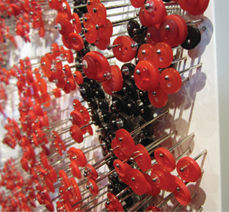 To the artist, buttons and beads symbolize the commonplace ordinariness of human beings; pins being the points of connection, and threads as a communicative link. Using a hammer to pound thousands of pins into walls in the process of her art, Ran Hwang herself projects the austere embodiment of a monk practicing spiritual discipline and Zen. This repetitive and laborious working process results in grandiose images of objects and beings, representing the natural and divine, in an attempt to address current social issues. Through her works, she constantly seeks to explore and delve into human experiences and connections, as well as positive and negative spaces.
To the artist, buttons and beads symbolize the commonplace ordinariness of human beings; pins being the points of connection, and threads as a communicative link. Using a hammer to pound thousands of pins into walls in the process of her art, Ran Hwang herself projects the austere embodiment of a monk practicing spiritual discipline and Zen. This repetitive and laborious working process results in grandiose images of objects and beings, representing the natural and divine, in an attempt to address current social issues. Through her works, she constantly seeks to explore and delve into human experiences and connections, as well as positive and negative spaces.
"Returning to the aesthetics of chance, there is much implied in this aspect of the artist's work. One could take it on a purely aesthetic level or related to the practical aspects of the work, the technicalities involved in finding a way to sustain the buttons, to hold them in place against the lesser weight of the pins. This may be the reason why some of the installations have piles of buttons stacked on the floor against the wall. It suggests impermanence, which is fully consistent with the artist's intention and method of work. While chance might be understood as intuitive, this should not discount the use of precision. Indeed, both are connected in the work of Ran Hwang.
"For example, a work, titled Two Love Trees (above) is conceived in three panels that function autonomously from the wall on which they are hung. The red blossoms implied by the aggregation of buttons that move across the three panels are essential to the flow and design of the work. This suggests that the intuition of placement is equal to the precision. In Two Love Trees, the aesthetics of chance is what gives the work its coherence and energy. Without it, there would be no beauty, there would be no garden in which to dream." - Robert C. Morgan, art critic, artist, writer and art historian
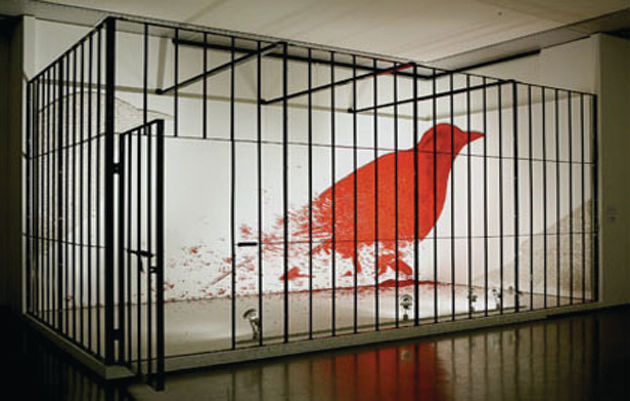
For the past decade, her works have been exhibited in both solo and group across the globe in countries such as Korea, Switzerland, USA and France, and are collected by distinguished hotels, museums and companies including the Ritz-Carlton Hotel in Hong Kong, the Shin Choi Fashion Company in New York, and the National Museum of Contemporary Art in Seoul.

Ran Hwang has completed several residencies such as at the Performance Space Studio Residency Program in 2011; the AAI-Artist Alliance, Lower East Side-Rotating & Long Term Studio Program in 2006; as well as the Full Fellow ship, Vermont Studio Center Residency Program, Vermont, U.S.A in 2004. Her works have been awarded the Gold prize at the AHL Foundation Annual Arts competition, New York in 2004; the Kyung-In Art Grand Exhibition at Puchun City Museum, Korea in 1996, and the Korean Water Watercolor Public Subscription Exhibition, Cultural Art Promotion House Art Hall, Seoul in 1995.
For more information, go to: //odetoart.com
